How to cultivate Cunninghamia lanceolata
Nanyang fir has beautiful branches and leaves, luxuriant branches, graceful tree posture, vigorous and beautiful childish. it is a beautiful leaf plant with high ornamental price, and many people will use it in homes, living rooms and other places. Next, let's learn the culture method of Cunninghamia lanceolata and see how to raise it.
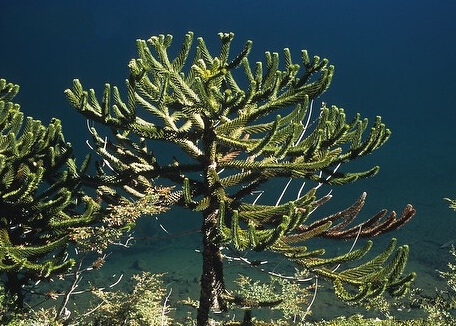
How to raise Sequoia fortunei
Cunninghamia lanceolata evergreen tree, native to Novoke Island, Australia, is one of the world-famous ornamental trees. Cunninghamia lanceolata is a positive tree species, like warm, humid environment, soft and sufficient light, not cold-resistant, avoid drought. Cultivation of southern fir needs plenty of sunshine in winter and avoid strong light exposure in summer. Cunninghamia lanceolata grows best when the temperature is 25 ℃ ~ 30 ℃ and the relative humidity is more than 70%. Nanyang fir is afraid of the dry gale in northern spring and the hot sun in midsummer, and prefers loose and fertile soil with high humus content and strong drainage and permeability.
In order to cultivate Cunninghamia lanceolata, it is suitable to use rotten leaf soil, peat soil, pure river, sand ratio of 1:3:1 and a small amount of mature organic fertilizer. The young trees of Cunninghamia lanceolata should change their pots once every year or every other spring, and the plants for more than 5 years should be replaced with large pots or buckets, turning the pots and changing the soil every two or three years. Nanyang fir pot cultivation should not be too deep, it is best to make the upper layer of rooting bud just exposed on the soil surface.
At the end of April or the beginning of May, the northern area is put out of the house to take shelter from the wind and the sun, the shade should be properly thinned in the middle of summer, and the basin should be turned at the right time in the growing season, so as to prevent the tree-shaped growth of Cunninghamia lanceolata from deviating and affecting the ornamental. Cunninghamia lanceolata culture should be watered moderately, always keep the basin soil and the surrounding environment moist, and strictly prevent drought and waterlogging. Too dry or too wet can easily cause the lower leaves of Cunninghamia lanceolata to be soft.
In the season of high temperature and air drying, you should often spray water or spray on the leaf surface and the surrounding environment of Cunninghamia lanceolata to increase air humidity. Air dryness will soften the lower leaves of Cunninghamia lanceolata. A small amount of organic liquid fertilizer should be applied regularly to Cunninghamia lanceolata in spring, summer and autumn, and nutrients should be replenished at any time during the peak growth period. Since the germination of new buds in spring, it is appropriate to apply rarefied organic liquid fertilizer 1-2 times a month to keep the Nanyang fir plants fresh and oily.
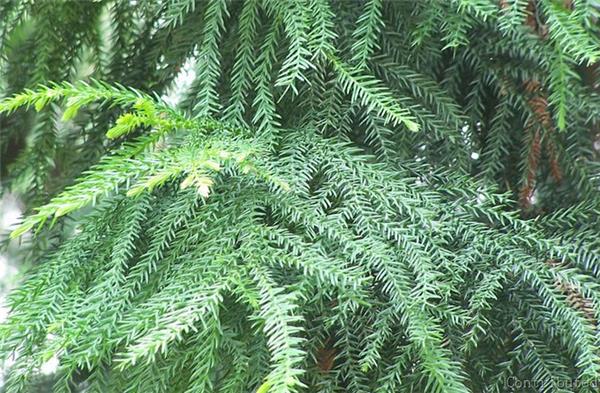
Culture methods of Cryptomeria fortunei
1. Propagation: the propagation methods of Cunninghamia lanceolata are generally sowing and cutting propagation. The seed coat of Cunninghamia lanceolata had better be broken before sowing in order to promote germination, and the root can be re-rooted from the cross section in 1-2 weeks at the appropriate temperature. Cunninghamia lanceolata in Nanyang is easy to propagate and is widely used. It is generally carried out in spring and summer. The main branches of Cunninghamia lanceolata should be selected as cuttings for the propagation of Cunninghamia lanceolata, and the plants grown from lateral branches should be crooked rather than straight. The cuttings are 10 to 15 m long and can take root in about 4 months under the conditions of 18 ℃ to 25 ℃ and high air humidity.
2. Cultivation: the pot soil of Cunninghamia lanceolata can be prepared with rotten leaf soil, garden soil plus 1 pound 4 sand and a small amount of base fertilizer, which requires loose and aerated basin soil. The potted southern fir in the north can be moved to the outdoor sunny place after Zhongdian in May to shade slightly to avoid direct sunlight at noon in summer. The cultivation of Cunninghamia lanceolata requires that the basin soil and the surrounding environment of Cunninghamia lanceolata should be kept moist during the growing season, but no water can be accumulated in the basin.
3. Lighting: Nanyang Shanxi has plenty of sunshine. In the northern area, Nanyang fir is generally moved to the south balcony or courtyard sunny place in early May, and pay attention to proper shade after summer to avoid exposure to the sun. Southern fir cultured in the northern region will be moved indoors at the end of September and the beginning of October and placed in a sunny place to control watering.
4. Temperature: Cunninghamia lanceolata can grow under many different temperatures, but its cold tolerance is not strong, and the optimum temperature for growth is 724 ℃. If the temperature increases, it will increase the air humidity around it.
5. Soil: rotten leaf soil, garden soil and river sand are the most suitable to be prepared with rotten leaf soil, garden soil and river sand plus Shaori fertilizer.
6. Watering: Cunninghamia lanceolata is fond of humid environment. In dry season and summer, we should often spray water on the leaves of Cunninghamia lanceolata, which can not only increase air humidity, but also keep the color of Nanyang fir leaves fresh and bright. During the cultivation of Cunninghamia lanceolata, watering should be appropriate and adequate in summer, so as to supplement the need for foliar transpiration in time and avoid drought damage. However, aquaculture of Cunninghamia lanceolata can not be overwatered, so that the basin soil is stagnant water, usually in order to keep the basin soil often wet.
7. Fertilization: Cunninghamia lanceolata grows rapidly, so in the vigorous growth season, topdressing is often needed to supplement the nutrients needed for the growth of Cunninghamia lanceolata. Generally speaking, starting from the germination of new buds in spring, we should pay attention to topdressing rotten thin cake fertilizer and water once or twice a month for absorption and utilization of Cunninghamia lanceolata.
8. Pruning: the lower branches and leaves of Cunninghamia lanceolata are easy to wither and yellow, resulting in the top-heavy and beautiful appearance of the whole Nanyang fir plant. When cultivating southern fir, it should be carefully managed and pruned as necessary.
9. Insect pests: the diseases of Cunninghamia lanceolata include leaf spot, branch blight, root nodule and so on. Leaf spot disease and branch blight can be sprayed with 8-fold solution of 70% methyl topiramate or 500-fold 600-fold solution of 65% Dysen zinc wettable powder; canker is smeared with 100-fold solution of 40% Fumei arsenic or 1001-fold solution of potassium permanganate; root nodule disease is soaked with 1000-fold solution of streptomycin. Insect pests are mainly caused by shell insects. When a small number of pests occur, the leaves are washed with clean water, and when more serious, they can be sprayed with 40% omethoate emulsion 500 times 100 times.
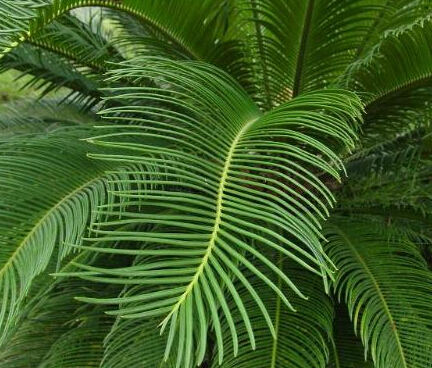
Matters needing attention in Culture of Cunninghamia lanceolata
The main results are as follows: 1. Cunninghamia lanceolata can not bear the severe cold. In the northern region, Cold Dew moved indoors at the end of September or early October, put it in a place with sufficient sunshine and air circulation, forbidden fertilizer and controlled water. The suitable temperature for the growth of Cunninghamia lanceolata was 10-25 ℃, and the overwintering temperature should not be lower than 5 ℃.
2. In the second year of transplanting seedlings of Cunninghamia lanceolata in Nanyang, or when the sowing seedlings grow to about 50 centimeters, a frame can be inserted next to the seedlings to support them in order to prevent the stem from bending.
3. In the process of cultivating Cunninghamia lanceolata, if the needles of Cunninghamia lanceolata fall off or turn yellow in winter, it is likely to be caused by too high temperature, too dry air or too dark light.
4. Cunninghamia lanceolata moved back to the room in late September and placed in the sunny place, turning the basin once every semimonthly, so as not to make the plant grow oblique due to light tendency.
5. Cunninghamia lanceolata should not be placed in a dark room for too long, and it should be moved to the sunny place after 2-3 weeks. Cunninghamia lanceolata should be watered in winter, and the overwintering temperature should be kept above 10 degrees.
Propagation methods of Cunninghamia lanceolata
Commonly used sowing, sowing and high-pressure propagation: sowing and reproduction, the seeds are hard, absorb water slowly, break the seed coat before sowing, do not hurt the kernels, can promote germination, germination is slow and easy to rot. The subtropical area should be sowed in March, sowed with strip sowing, covered with 1.5 square meters of soil, covered with grass curtain to preserve moisture after sowing, and germinated after 30 days. It should be shaded in the seedling stage and can be planted separately after 2 years. From May to June, one-year-old side branches or long branches from the main axis were selected as cuttings, cut into 10-12 cm long, the lower needles were removed, the base incision should be cut flat, and the depth of human soil should not exceed 4 m, shade and maintenance, and covered with film for moisturizing, keeping it about 25 ℃, rooting for 3-4 months. High-pressure propagation, often carried out in early May, select 2-year-old lateral branches, peel its base with a knife, 1-1.5 cm wide, wait for the wound to dry slightly, smear 3000 mg / L Tsai acetic acid, wrap it with moss drunken or wet peat, wrap it tightly up and down with plastic film, heal and take root in about 3-4 months, and then cut off for cultivation.
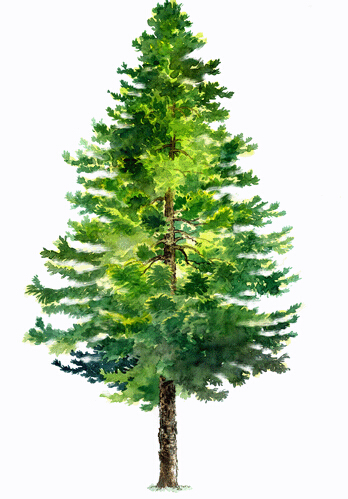
Cultivation techniques of Cryptomeria fortunei
The basin soil can be mixed with 3 parts of garden soil, 2 parts of rotten leaf soil and 1 part of coarse sand. The soil should be changed every 2 ~ 3 years in early spring. The root system should be trimmed properly and new culture soil and proper base fertilizer should be added when changing the basin. The growing season should be watered frequently, spraying water to the leaves 2 or 3 times a day to keep the soil moist and have high air humidity. Too dry soil in summer and too much water in winter will cause the lower leaves to droop and soften. In the peak growing season, topdressing liquid fertilizer 3-4 times a month, using alkaline fertilizer as little as possible. Summer should be properly shaded to prevent strong light exposure. Indoor display skillful days or so, to be moved to outdoor maintenance, otherwise it will make the plant thin and affect the ornamental value. At the end of autumn, move to a medium-temperature greenhouse to overwinter, the temperature requires more than 10 ℃, to maintain a stable environment.
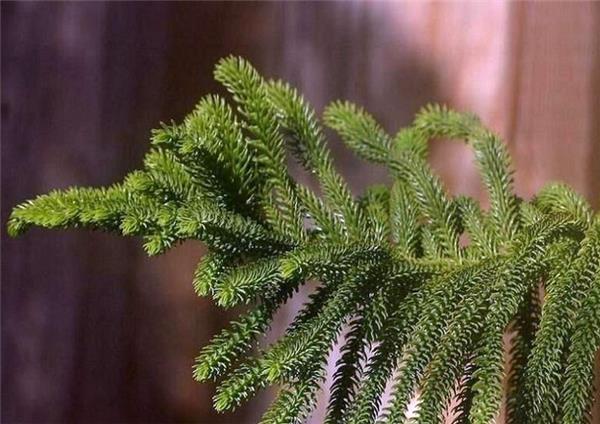
What if the leaves of Cunninghamia lanceolata turn yellow?
1. The temperature is not suitable for the yellowing leaves of Cunninghamia lanceolata.
Cunninghamia lanceolata has certain requirements for temperature in maintenance, and the most suitable growth temperature is 2530 ℃. Too high or too low temperature is disadvantageous to the growth of Cunninghamia lanceolata. Cunninghamia lanceolata leaves turn yellow when the temperature is below 5 degrees, and a small amount of leaves fall off, high temperature but low air humidity. Therefore, the maintenance of Cunninghamia lanceolata should pay attention to the temperature, low temperature should be moved into the room to keep warm, high temperature should pay attention to keep the air moist.
2. How to get too low humidity when the leaves of Cunninghamia lanceolata turn yellow
Cunninghamia lanceolata also has requirements for air humidity for growth, and it grows best when the relative humidity is less than 80%. The air humidity is too low or the wind is too strong, resulting in acute dehydration and yellowing of the leaves. This requires putting Cunninghamia lanceolata in a shelter, or spraying water frequently to improve air humidity.
3. There is too little light when the leaves of Cunninghamia lanceolata turn yellow.
Nanyang Cunninghamia lanceolata pot planting equipment in the home should pay attention to the problem of light, there can be sufficient sunlight, in the good light maintenance and management of Nanyang fir grows well. In the room with weak light for a long time, Cunninghamia lanceolata will show the phenomenon of leaf yellowing and leaf shedding, which needs to be moved to the light, otherwise it will further aggravate the disease.
4. How to overwater the yellowing leaves of Cunninghamia lanceolata
Overwatering is one of the common causes of yellowing leaves of southern fir. The watering principle of Cunninghamia lanceolata is dry and wet, it must not be watered too much or too frequently, and the basin soil is not dry or watered, otherwise the roots of Cunninghamia lanceolata will rot due to lack of oxygen, making it difficult to absorb water and nutrients, and the leaves begin to turn yellow. therefore, watering of Cunninghamia lanceolata should be carried out according to its habits.
5. Infection of diseases and insect pests when the leaves of Cunninghamia lanceolata turn yellow
Cunninghamia lanceolata maintenance is relatively simple, generally there will not be diseases and insect pests, but we should also pay attention to protection, the leaves of Cunninghamia lanceolata will be yellow and fall off when the diseases and insect pests are infected. Generally, carbendazim, chlorothalonil and other drugs can be used to prevent the yellowing of Nanyang fir leaves.
Matters needing attention in Culture of Cunninghamia lanceolata
The main results are as follows: 1. Cunninghamia lanceolata can not bear the severe cold. In the northern region, Cold Dew moved indoors at the end of September or early October, put it in a place with sufficient sunshine and air circulation, forbidden fertilizer and controlled water. The suitable temperature for the growth of Cunninghamia lanceolata was 10-25 ℃, and the overwintering temperature should not be lower than 5 ℃.
2. In the second year of transplanting seedlings of Cunninghamia lanceolata in Nanyang, or when the sowing seedlings grow to about 50 centimeters, a frame can be inserted next to the seedlings to support them in order to prevent the stem from bending.
3. In the process of cultivating Cunninghamia lanceolata, if the needles of Cunninghamia lanceolata fall off or turn yellow in winter, it is likely to be caused by too high temperature, too dry air or too dark light.
4. Cunninghamia lanceolata moved back to the room in late September and placed in the sunny place, turning the basin once every semimonthly, so as not to make the plant grow oblique due to light tendency.
5. Cunninghamia lanceolata should not be placed in a dark room for too long, and it should be moved to the sunny place after 2-3 weeks. Cunninghamia lanceolata should be watered in winter, and the overwintering temperature should be kept above 10 degrees.
Propagation methods of Cunninghamia lanceolata
Commonly used sowing, sowing and high-pressure propagation: sowing and reproduction, the seeds are hard, absorb water slowly, break the seed coat before sowing, do not hurt the kernels, can promote germination, germination is slow and easy to rot. The subtropical area should be sowed in March, sowed with strip sowing, covered with 1.5 square meters of soil, covered with grass curtain to preserve moisture after sowing, and germinated after 30 days. It should be shaded in the seedling stage and can be planted separately after 2 years. From May to June, one-year-old side branches or long branches from the main axis were selected as cuttings, cut into 10-12 cm long, the lower needles were removed, the base incision should be cut flat, and the depth of human soil should not exceed 4 m, shade and maintenance, and covered with film for moisturizing, keeping it about 25 ℃, rooting for 3-4 months. High-pressure propagation, often carried out in early May, select 2-year-old lateral branches, peel its base with a knife, 1-1.5 cm wide, wait for the wound to dry slightly, smear 3000 mg / L Tsai acetic acid, wrap it with moss drunken or wet peat, wrap it tightly up and down with plastic film, heal and take root in about 3-4 months, and then cut off for cultivation.

Cultivation techniques of Cryptomeria fortunei
The basin soil can be mixed with 3 parts of garden soil, 2 parts of rotten leaf soil and 1 part of coarse sand. The soil should be changed every 2 ~ 3 years in early spring. The root system should be trimmed properly and new culture soil and proper base fertilizer should be added when changing the basin. The growing season should be watered frequently, spraying water to the leaves 2 or 3 times a day to keep the soil moist and have high air humidity. Too dry soil in summer and too much water in winter will cause the lower leaves to droop and soften. In the peak growing season, topdressing liquid fertilizer 3-4 times a month, using alkaline fertilizer as little as possible. Summer should be properly shaded to prevent strong light exposure. Indoor display skillful days or so, to be moved to outdoor maintenance, otherwise it will make the plant thin and affect the ornamental value. At the end of autumn, move to a medium-temperature greenhouse to overwinter, the temperature requires more than 10 ℃, to maintain a stable environment.

What if the leaves of Cunninghamia lanceolata turn yellow?
1. The temperature is not suitable for the yellowing leaves of Cunninghamia lanceolata.
Cunninghamia lanceolata has certain requirements for temperature in maintenance, and the most suitable growth temperature is 2530 ℃. Too high or too low temperature is disadvantageous to the growth of Cunninghamia lanceolata. Cunninghamia lanceolata leaves turn yellow when the temperature is below 5 degrees, and a small amount of leaves fall off, high temperature but low air humidity. Therefore, the maintenance of Cunninghamia lanceolata should pay attention to the temperature, low temperature should be moved into the room to keep warm, high temperature should pay attention to keep the air moist.
2. How to get too low humidity when the leaves of Cunninghamia lanceolata turn yellow
Cunninghamia lanceolata also has requirements for air humidity for growth, and it grows best when the relative humidity is less than 80%. The air humidity is too low or the wind is too strong, resulting in acute dehydration and yellowing of the leaves. This requires putting Cunninghamia lanceolata in a shelter, or spraying water frequently to improve air humidity.
3. There is too little light when the leaves of Cunninghamia lanceolata turn yellow.
Nanyang Cunninghamia lanceolata pot planting equipment in the home should pay attention to the problem of light, there can be sufficient sunlight, in the good light maintenance and management of Nanyang fir grows well. In the room with weak light for a long time, Cunninghamia lanceolata will show the phenomenon of leaf yellowing and leaf shedding, which needs to be moved to the light, otherwise it will further aggravate the disease.
4. How to overwater the yellowing leaves of Cunninghamia lanceolata
Overwatering is one of the common causes of yellowing leaves of southern fir. The watering principle of Cunninghamia lanceolata is dry and wet, it must not be watered too much or too frequently, and the basin soil is not dry or watered, otherwise the roots of Cunninghamia lanceolata will rot due to lack of oxygen, making it difficult to absorb water and nutrients, and the leaves begin to turn yellow. therefore, watering of Cunninghamia lanceolata should be carried out according to its habits.
5. Infection of diseases and insect pests when the leaves of Cunninghamia lanceolata turn yellow
Cunninghamia lanceolata maintenance is relatively simple, generally there will not be diseases and insect pests, but we should also pay attention to protection, the leaves of Cunninghamia lanceolata will be yellowed and fall off when the diseases and insect pests are infected. Generally, carbendazim, chlorothalonil and other drugs can be used to prevent the yellowing of Nanyang fir leaves.
Related
- Wuhan Hospital Iron Tree Blooming Result Was Instantly Frightened by the Gardener Master
- Which variety of camellia is the most fragrant and best? Which one do you like best?
- What is the small blue coat, the breeding methods and matters needing attention of the succulent plant
- Dormancy time and maintenance management of succulent plants during dormancy
- Minas succulent how to raise, Minas succulent plant pictures
- What are the varieties of winter succulent plants
- How to raise succulent plants in twelve rolls? let's take a look at some experience of breeding twelve rolls.
- Attention should be paid to water control for succulent plants during dormant period (winter and summer)
- Watering experience of twelve rolls of succulent plants
- Techniques for fertilizing succulent plants. An article will let you know how to fertilize succulent plants.



